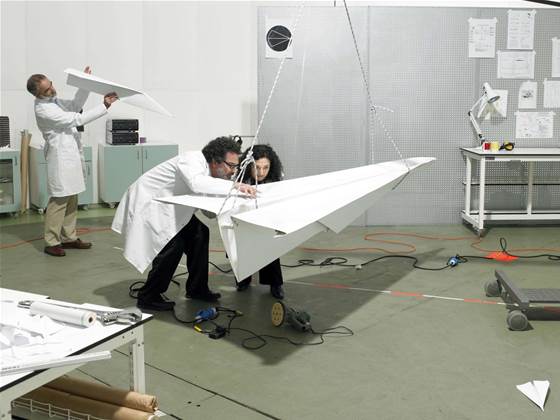It’s all very well to acknowledge the importance of innovation to the future of our organisations.

But how can organisations actually embed innovation into the DNA and culture of their business?
Below I’ve summarised ten things that – based on my own experience and research – are considerations when you’re looking to promote innovative thinking.
Tip 1: Create a specific innovation function
The end goal is to have everyone in the organisation thinking about innovation, but somewhat counterintuitively, I believe it is necessary for at least a couple of years to make somebody accountable for driving innovation for the enterprise.
This is the only way to ensure that someone is 100 percent focused on truly embedding innovation into the DNA of the company.
There are several choices for how you go about creating this function. Organisations can appoint a chief innovation officer (either in the business or IT), or perhaps combine the role with the IT strategy function. You could make it part of your digital function if you have one, but you need to be careful that it covers all aspects of the business, not just your customer facing channels.
Whichever way you choose, the role should work with each business unit and focus on facilitating continuous innovation across the organisation. The individual would be responsible for keeping abreast of new and emerging technologies and innovative thinking globally. The role should also act as an internal evangelist for innovation.
You could also consider making this function directly accountable for managing disruptive innovation opportunities. This is because the nature of disruption is that you are challenging your own business model. By having a chief innovation officer, or someone accountable for innovation, they will be able to have more objectivity about threats and opportunities.
Tip 2: Create a physical innovation collaboration space
In my personal experience, one of the best ways to get everyone thinking in an innovative way is to create a physical space in your organisation where you can bring people together to collaborate on emerging opportunities.
The space needs to follow the principles of customer-centred design and be facilitated by dedicated staff professionally trained in whatever methodology you use.
Two examples of good methodologies that I have been exposed to are PwC’s ‘The Difference’ and another from Capgemini. Personally, I don’t think it actually matters all that much what methodology you choose, even if you design one yourselves.
What is important is that the centre is run professionally, and that you allow it to be used by any groups in your organisation (not just the senior leaders) who are looking to consider continuous or disruptive innovation opportunities.
Tip 3: Put innovation into your executives’ scorecards
The best way to encourage focus for leaders is to measure a given activity or outcome in their scorecards. You need to start with your group executives and then cascade to at least your middle management layer. Of course this can be harder than it looks because to do this, you will need to define innovation and how it will be measured.
Should it be just about doing innovation activities, or should be about the outcomes of innovation opportunities? Should it cover continuous improvement or the effectiveness of disruptive innovation as well?
My advice is to use the first of your workshops in your new innovation collaboration space to work this out as a team. This solves two problems at once. You will decide on the innovation measures to put into your scorecards and you will have engaged a wide group to do so, ensuring buy-in and engagement.
Tip 4: Make innovation a standing topic in every team meeting
This may sound onerous, but I have seen this work before in relation to embedding a sales and service culture into an organisation. The idea is to get every team, no matter at what level, to talk about innovation in their regular weekly team meeting.
The question they might ask could be as simple as: “How have we been innovative over this last week”?. The important thing here is to get all teams in the organisation to ask this, not just those working in the digital space, in strategy or in revenue generating business units.
Different teams will focus on different aspects of innovation and some will be more relevant than others but, in the end, all individuals and all teams should look for ways to be more innovative in their respective areas.
Next, use your Town Halls to showcase what people have been doing to ensure that learnings are shared and rewarded.
Tip 5: Implement a group-wide collaboration system and run hackathons
As I’ve expressed in this blog before, not enough attention is being paid to leveraging collaboration tools. New ways of working are a healthy practice to get your people and customers talking about innovative ideas.
Collaboration platforms allow for unstructured conversations and the sharing of ideas.
If you want to take collaboration to the next level, a powerful idea is to also run structured hackathons on specific topics. Corporate collaboration tools can be used to extend these activities beyond the bounds of your physical workshop space you can get many more people engaged and generate many more ideas.
This is a big task that needs to be managed carefully, so you will probably only have scope to do it a few times a year.
Tip 6: Set up a suggestion process
Organisations have used good old fashioned suggestion boxes for decades. Back in the day, I remember some great ideas coming out of places where I worked early in my career.
I think the suggestion box needs to come back with a vengeance. Executives need visibility of what is suggested and should consider providing meaningful rewards for ideas that lead to tangible results.
Think how much traction you might get if you offered up a bonus based on one or two percent of the savings or revenue generated (up to a certain amount of course).
Tip 7: Partner with your key vendors and universities
I have seen some impressive innovation capability in some of the major vendors out there. Organisations like IBM, Microsoft, Telstra, Optus, Google and the major Indian outsourcers spend millions of dollars each year on research and development. You should negotiate access to these capabilities if you already have strong commercial relationships with them.
I have continually been amazed at how generous the major vendors can be for those customers willing to take advantage of this capability. I am not just talking about study tours overseas by vendors, I am talking about establishing deep and sustainable relationships with the engineering functions in your vendors to foster and facilitate innovation in your organisation.
Another idea that I have seen work a few times is to establish similar relationships with universities, whether they be in Australia or overseas. Many of these academic institutions have established programs you can leverage, and beyond that I tend to find them interested in any partnership that helps to develop new capabilities.
Tip 8: Demonstrate what you’ve done
It’s important to set up a space or a network of hubs across your enterprise where you can demonstrate tangible capability and concepts drawn from your innovation programs. I have seen some great examples of these both in Singapore (Optus/Singtel) and at home and in Telstra’s innovation centre in Melbourne.
A number of financial services firms are starting to develop their own innovation hubs, with Westpac launching its centre in Kogarah only a few weeks ago. This hub should allow key stakeholders to touch and feel real prototypes rather than PowerPoint presentations.
A good idea is to partner with your key vendors to develop an innovation hub and allow them to showcase their capability as well. You might be surprised at how cheaply you can set up a centre when key partners are willing to sponsor.
Tip 9: Make innovation a part of your behaviours and principles
Many organisations put their strategy on a single page for communication to their staff. Invariably this outlines the organisation’s purpose, ambition, behaviours and priorities.
If the organisation is serious about embedding innovative thinking into their culture, innovation needs to be expressly listed on this page, not assumed to be a part of other behaviours or priorities.
It may sound like a small thing and not in the same league as appointing a chief innovation officer, but I know from experience that small considerations like this can be quite powerful.
A one-page strategy document will likely be put on every staff member’s desk - no other document has that level of coverage across the enterprise. You want your staff to be reminded of your focus on innovation every single day.
Tip 10: Present to your board regularly on Innovation
In those roles where I've been fortunate enough to present to the board on innovation on a routine basis, I have found it definitely helps drive focus with your executives.
It shouldn’t be done just for the sake of the board. It should be done because no senior executive is going to present to their board without having some tangible examples of activity and outcomes.
To get tangible examples and outcomes, you need to actually do something, which leads to focus and, much like having innovation measures in your scorecard, this focus will permeate into the enterprise and help change the culture in your organisation.
Do you have any other suggestions? Feel free to add them below…





.png&h=140&w=231&c=1&s=0)






 iTnews Executive Retreat - Security Leaders Edition
iTnews Executive Retreat - Security Leaders Edition












_(1).jpg&h=140&w=231&c=1&s=0)



